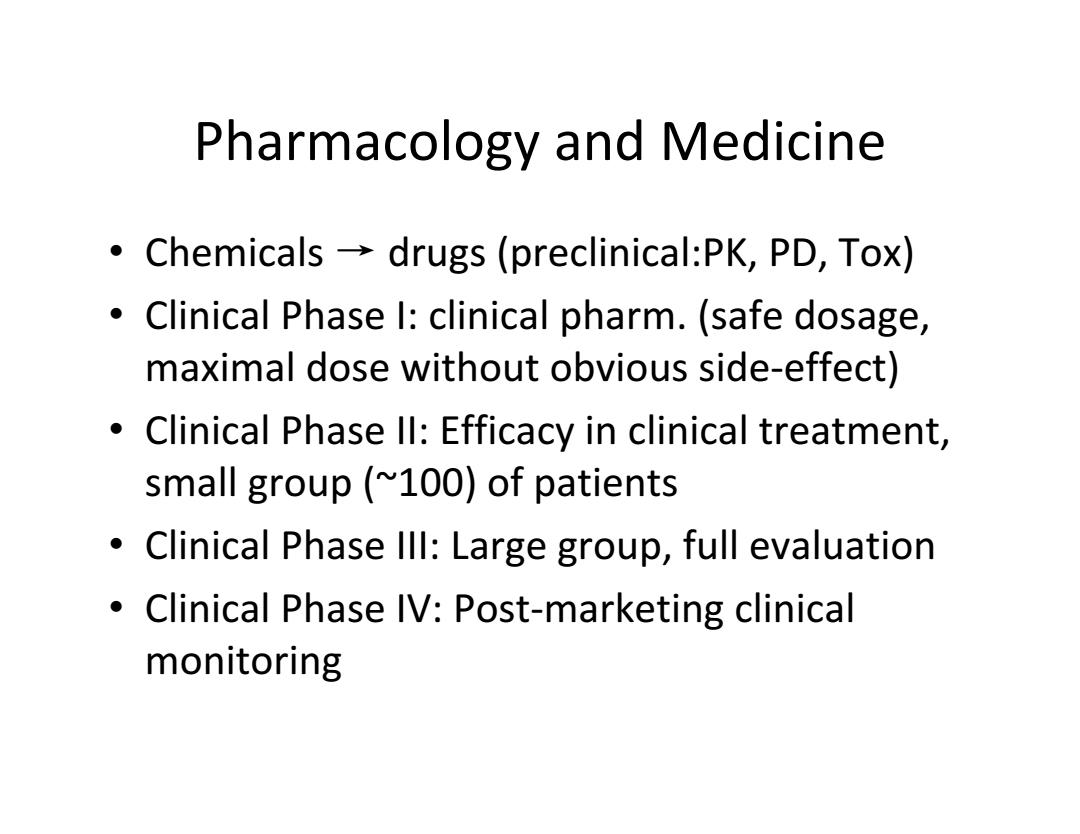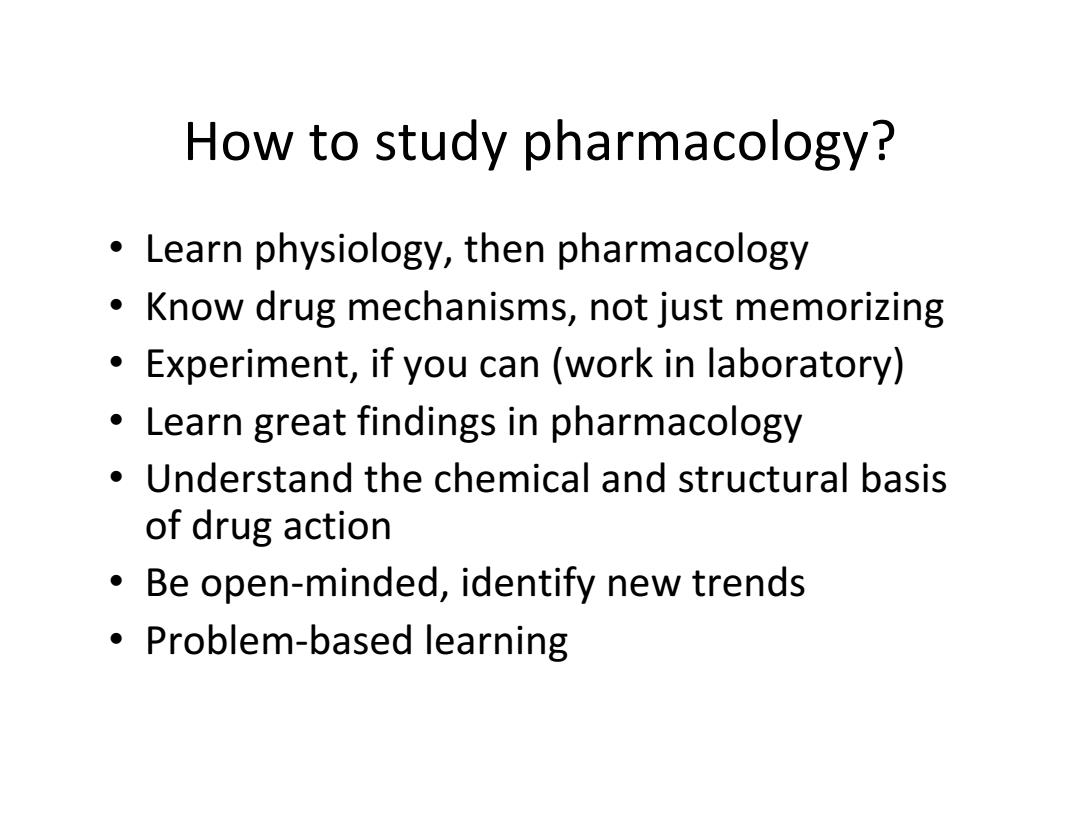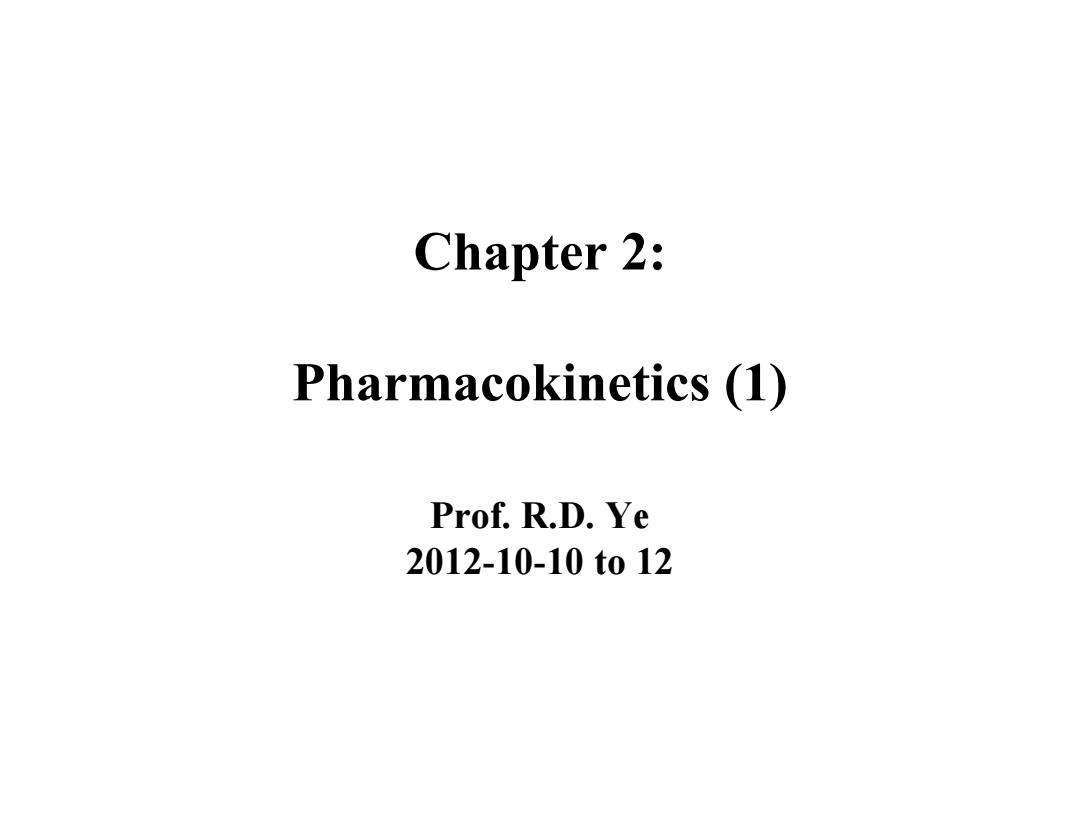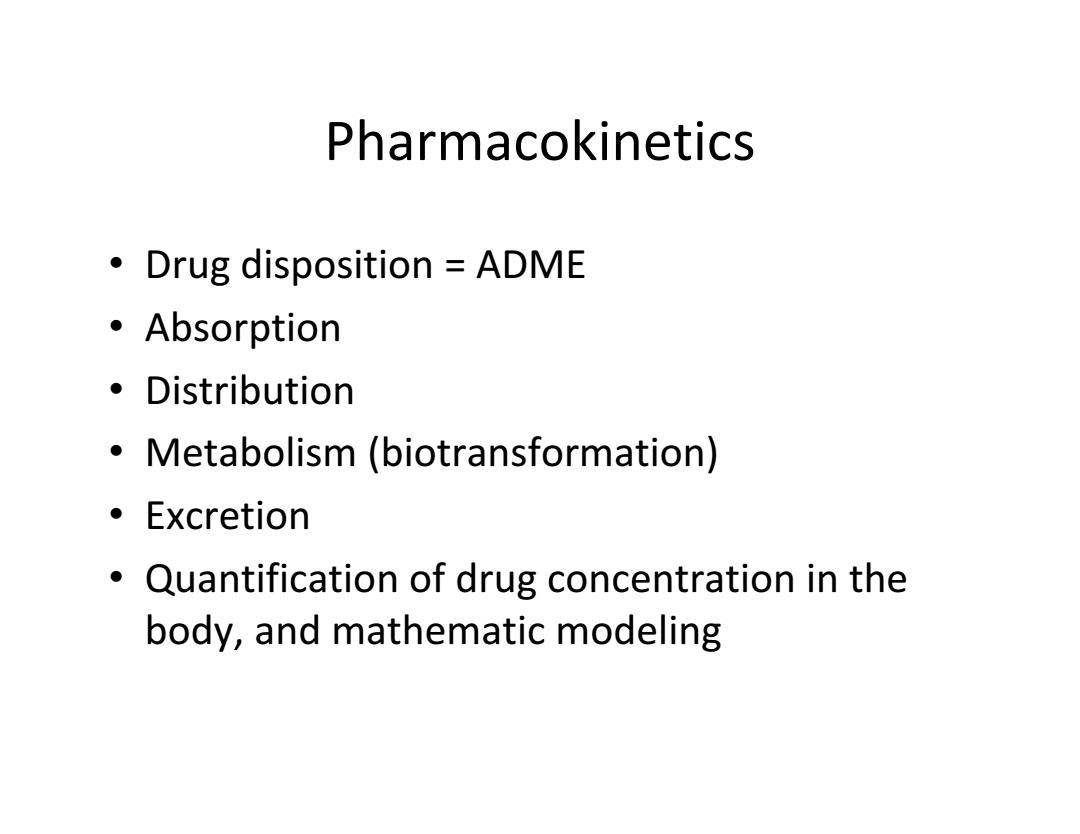
Pharmacology and Medicine ·Chemicals→drugs(preclinical:PK,PD,Tox) Clinical Phase I:clinical pharm.(safe dosage, maximal dose without obvious side-effect) Clinical Phase ll:Efficacy in clinical treatment, small group (~100)of patients . Clinical Phase lll:Large group,full evaluation Clinical Phase IV:Post-marketing clinical monitoring
Pharmacology and Medicine • Chemicals → drugs (preclinical:PK, PD, Tox) • Clinical Phase I: clinical pharm. (safe dosage, maximal dose without obvious side‐effect) • Clinical Phase II: Efficacy in clinical treatment, small group (~100) of patients • Clinical Phase III: Large group, full evaluation • Clinical Phase IV: Post‐marketing clinical monitoring

How to study pharmacology? Learn physiology,then pharmacology Know drug mechanisms,not just memorizing Experiment,if you can(work in laboratory) Learn great findings in pharmacology Understand the chemical and structural basis of drug action Be open-minded,identify new trends Problem-based learning
How to study pharmacology? • Learn physiology, then pharmacology • Know drug mechanisms, not just memorizing • Experiment, if you can (work in laboratory) • Learn great findings in pharmacology • Understand the chemical and structural basis of drug action • Be open‐minded, identify new trends • Problem‐based learning

Chapter 2: Pharmacokinetics (1) Prof.R.D.Ye 2012-10-10to12
Chapter 2: Pharmacokinetics (1) Prof. R.D. Ye 2012-10-10 to 12

Pharmacokinetics Drug disposition ADME ·Absorption ·Distribution Metabolism (biotransformation) ·Excretion Quantification of drug concentration in the body,and mathematic modeling
Pharmacokinetics • Drug disposition = ADME • Absorption • Distribution • Metabolism (biotransformation) • Excretion • Quantification of drug concentration in the body, and mathematic modeling

ADME of a drug taken orally Oral administration Blood Bound drug Excretion Gut Absorption Free drug Metabolite Urine Distribution Biotransformation Target organ Liver
ADME of a drug taken orally